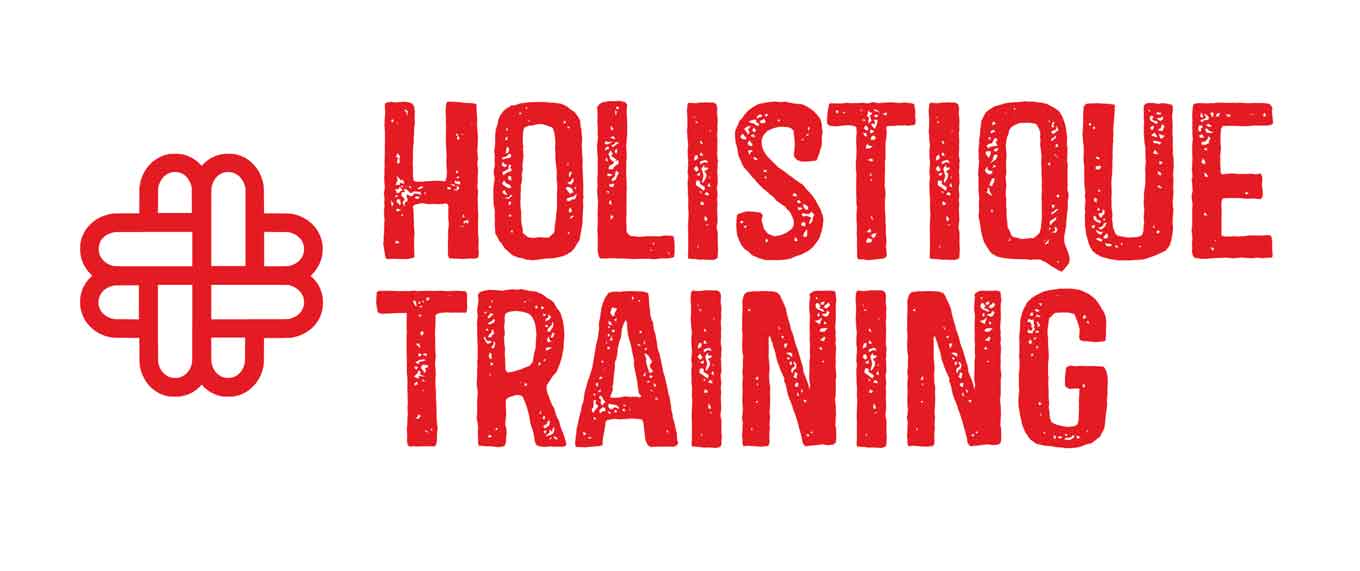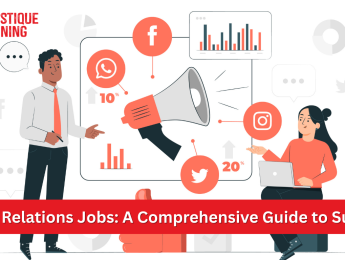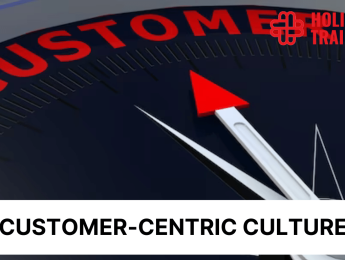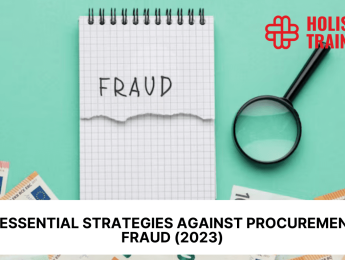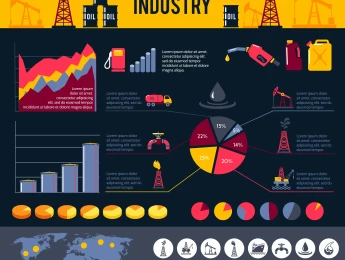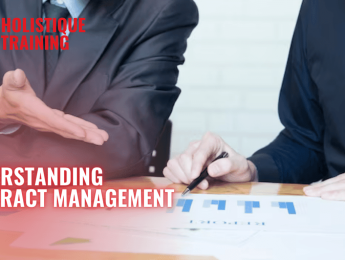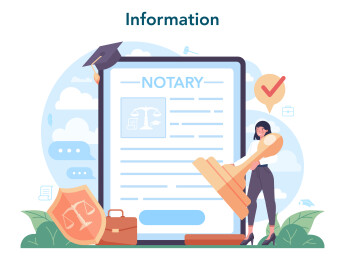- Table of Contents
- Introduction
- What Are PR Jobs?
- PR vs. Marketing vs. Media
- The Overall Role of PR in Organizations
- What Does a PR Professional Do Daily?
- Writing Press Releases
- Organizing Events and Press Conferences
- Building Media and Journalist Relationships
- Crisis Communication and Reputation Management
- Monitoring Media Coverage and Public Sentiment
- Key Skills Needed for PR Careers
- Strong Written and Verbal Communication
- Strategic Thinking and Problem-Solving
- Time Management and Ability to Handle Pressure
- Presentation and Negotiation Skills
- Familiarity with PR Tools and Digital Platforms
- Challenges in PR Jobs
- Managing Crises and Public Backlash
- Fast-Paced, High-Pressure Environments
- Maintaining Brand Consistency Across Platforms
- Dealing with Negative Media Coverage
- Types of PR Roles
- Internal vs. External PR
- Specialized PR Fields
- In-House vs. PR Agency
- Where Can You Work in PR?
- How to Start a Career in PR
- Educational Backgrounds
- Internships and Volunteering
- Networking Tips and Portfolio Building
- How Holistique Training Can Help You Launch a PR Career
- Conclusion
Introduction
In a digital age where every brand, organization, or individual seeks to manage their image and reputation strategically, public relations (PR) has become an essential component of communication. Whether it is a multinational company responding to a crisis, a government promoting its policies, or a celebrity seeking to maintain a favorable public image, PR professionals play a pivotal role behind the scenes. The demand for skilled public relations experts continues to grow as organizations realize the power of narrative and relationship management in achieving their goals.
This article serves as a comprehensive guide to PR jobs, covering their definitions, responsibilities, required skills, and career paths. Whether you're a student considering a PR career or a professional exploring new opportunities, this guide will help you understand what it takes to succeed in this dynamic and rewarding field.
What Are PR Jobs?
Public Relations (PR) refers to the strategic communication process that builds mutually beneficial relationships between organizations and their publics. Unlike advertising or marketing, which are often directly promotional and sales-driven, PR focuses on maintaining a positive reputation and fostering trust through earned media and interpersonal communication. PR is about storytelling, relationship management, and reputation-building across various channels.
PR vs. Marketing vs. Media
To better understand the role of PR, it's helpful to distinguish it from related fields like marketing and media:
Feature | Public Relations | Marketing | Media |
|---|---|---|---|
Main Objective | Build and maintain reputation | Drive sales and revenue | Deliver content and information |
Communication Type | Two-way, persuasive, relationship-driven | One-way or two-way, promotional | One-way, information dissemination |
Channels Used | Earned media, social media, events | Paid ads, email, SEO, promotions | Broadcast, print, digital publications |
Target Audience | Stakeholders, media, general public | Consumers and prospects | Readers, viewers, listeners |
Metrics of Success | Media coverage, sentiment, trust | Conversions, leads, ROI | Audience reach, engagement |
The Overall Role of PR in Organizations
PR professionals serve as the voice of the organization, ensuring that the right message reaches the right audience at the right time. Their responsibilities can range from writing press releases and pitching stories to journalists to handling crisis communication during scandals or public backlash. They also play a key role in building internal communication strategies, especially in large organizations where employee morale and brand consistency matter.
In essence, PR helps organizations:
- Manage their reputation.
- Establish credibility and trust with the public.
- Respond effectively to crises.
- Communicate organizational values.
- Build long-term relationships with stakeholders.
The Impact of PR on Organizational Success
Numerous studies have demonstrated the significant influence PR has on organizational performance:
- According to the Public Relations Society of America (PRSA), effective PR campaigns can improve brand visibility by over 60% and generate up to 3.5 times more engagement than paid advertising campaigns.
- A study by the Harvard Business Review found that companies with a strong PR strategy are 2.5 times more likely to maintain a positive public image during a crisis than those without.
- The Institute for Public Relations reports that 89% of executives believe PR contributes significantly to business success and stakeholder trust.
PR, therefore, is not merely an auxiliary function; it is integral to strategic communication and plays a decisive role in how organizations are perceived and supported.
What Does a PR Professional Do Daily?
Writing Press Releases
One of the most common tasks in PR is writing press releases. These documents communicate important news or announcements to media outlets. A well-written press release can lead to valuable media coverage that enhances the organization’s visibility. PR professionals must ensure the press release is clear, engaging, and newsworthy.
Organizing Events and Press Conferences
PR teams often coordinate press conferences, media briefings, and public events. These occasions allow organizations to engage directly with journalists, influencers, and stakeholders. Event planning includes logistics, scheduling speakers, sending invitations, preparing media kits, and ensuring press coverage.
Building Media and Journalist Relationships
Media relations is a core function of PR. Professionals spend time networking with journalists and editors to pitch stories, answer questions, and ensure accurate reporting. Maintaining a strong rapport with the media can lead to positive coverage and quicker responses during urgent situations.
Crisis Communication and Reputation Management
During crises—whether a product recall, scandal, or natural disaster—PR professionals act fast to control the narrative. They draft official statements, prepare talking points for executives, and monitor social media for sentiment. The goal is to protect and restore the organization's reputation.
Monitoring Media Coverage and Public Sentiment
Daily monitoring of media coverage is vital to assess how the organization is being portrayed. PR professionals use digital tools to track mentions, analyze public sentiment, and report results to leadership. This helps in adjusting communication strategies as needed.
Key Skills Needed for PR Careers
Strong Written and Verbal Communication
Communication is the foundation of PR. Professionals must be able to write clearly and persuasively, whether it's a press release, speech, or blog post. Verbal communication is equally important for interviews, presentations, and media briefings. A LinkedIn study shows that 92% of hiring managers consider communication skills crucial for PR roles.
Strategic Thinking and Problem-Solving
PR is not just about reacting to events; it’s about anticipating them and developing proactive strategies. Whether planning a campaign or managing a crisis, PR professionals must think critically, assess risks, and solve problems efficiently.
Time Management and Ability to Handle Pressure
PR professionals often work under tight deadlines. Managing multiple tasks—from media pitches to event planning—requires exceptional organizational skills. The ability to prioritize and stay calm under pressure is essential. A survey by CareerBuilder found that 78% of PR professionals list time management as the most challenging but essential skill.
Presentation and Negotiation Skills
Presenting ideas to clients or senior management, negotiating with media outlets, or pitching stories requires confidence and persuasion. PR professionals need to be engaging speakers and tactful negotiators.
Familiarity with PR Tools and Digital Platforms
Modern PR heavily relies on technology. Familiarity with tools like Cision, Meltwater, Google Analytics, and social media dashboards (e.g., Hootsuite) allows professionals to monitor, report, and strategize effectively. A survey by the Digital Marketing Institute found that 83% of PR professionals who use digital tools report improved efficiency and better campaign outcomes.
Challenges in PR Jobs
Managing Crises and Public Backlash
Crises can strike at any time, and the pressure to respond quickly and correctly can be immense. A poorly handled crisis can damage an organization’s reputation for years. PR professionals must act swiftly and wisely under scrutiny.
Fast-Paced, High-Pressure Environments
PR teams often juggle multiple campaigns, deadlines, and media requests simultaneously. This constant motion can lead to burnout if not managed properly. Flexibility and resilience are key traits for surviving and thriving in such environments.
Maintaining Brand Consistency Across Platforms
With communication spread across websites, social media, print, and live events, ensuring a consistent message and tone is a challenge. PR professionals must coordinate closely with marketing and design teams to ensure brand alignment.
Dealing with Negative Media Coverage
Negative news can spread quickly, especially on social media. PR teams must monitor and respond to such coverage diplomatically. Turning negative coverage into an opportunity to showcase transparency and improvement is part of the job.
Types of PR Roles
Public relations professionals can work in a variety of specialized roles, each with unique responsibilities, audiences, and strategies. Understanding the different types of PR helps individuals choose a path that aligns with their interests and strengths. Whether you prefer internal communication within organizations or managing public narratives for high-profile clients, the PR field offers diverse opportunities. Below is an overview of key distinctions and specializations within PR.
Internal vs. External PR
Role Type | Description |
|---|---|
Internal PR | Focuses on communication within an organization, including employee engagement, leadership messaging, and company culture. |
External PR | Involves managing the organization’s image and relationships with the public, media, customers, and stakeholders. |
Specialized PR Fields
Sector | Description |
|---|---|
Corporate PR | Handles branding, executive communication, and investor relations. |
Political PR | Manages the image and policies of politicians or government bodies. |
Healthcare PR | Focuses on communication strategies in medical institutions and pharma. |
Entertainment PR | Manages publicity for celebrities, movies, and entertainment brands. |
In-House vs. PR Agency
Workplace Type | Description |
|---|---|
In-House | PR professionals work within a single organization, focusing solely on its brand. |
PR Agency | Work with multiple clients, often juggling varied industries and projects. |
Where Can You Work in PR?
- PR Agencies: Offer a diverse environment with exposure to multiple industries and clients. Ideal for those who enjoy fast-paced and varied work.
- Large Companies and Corporations: Typically have in-house PR departments. Focus is on brand consistency and long-term strategy.
- Government or International Organizations: Roles often involve policy communication, crisis management, and community outreach.
- Media Outlets or Communication Departments: These positions bridge journalism and PR, focusing on content creation and media relations.
How to Start a Career in PR?
Educational Backgrounds
Degrees in communications, journalism, marketing, or public relations provide a strong foundation for a successful PR career. These fields equip students with the necessary skills to write effectively, analyze audiences, and craft strategic messages. A communications degree focuses on the theories and practices of effective messaging across channels. Journalism teaches research, storytelling, and ethics—crucial for writing press releases and dealing with media. Marketing provides insights into consumer behavior and strategic campaign planning. Public relations programs, when available, offer specialized training in media relations, crisis communication, and brand management. All these disciplines intersect in the world of PR, making them highly relevant to the profession.
Internships and Volunteering
Hands-on experience is vital for anyone entering the PR industry. Internships at PR agencies, corporate communication departments, or media outlets provide exposure to daily responsibilities like writing, media outreach, and event planning. Volunteering for student organizations, NGOs, or community events also offers opportunities to develop real-world PR skills in low-risk environments. These experiences build confidence, help you understand the pace and pressure of PR work, and enrich your resume with relevant accomplishments.
Networking Tips and Portfolio Building
Attend Industry Events:
Attending PR conferences, industry summits, and online webinars offers more than just educational value—it connects you with influential professionals and potential employers. These events often include panel discussions, workshops, and networking sessions where you can engage with industry leaders, stay updated on PR trends, and present yourself as a committed and informed candidate. Building relationships at such gatherings can open doors to job referrals, mentorship, and collaborative projects.
Join Professional Associations Membership in professional organizations:
Joining Professional Associations Membership in professional organizations like the Public Relations Society of America (PRSA) or the International Association of Business Communicators (IABC) offers a wealth of resources. These associations provide access to exclusive job boards, webinars, training, and local chapters for in-person networking. Being a member signals your dedication to professional development and connects you to a community that can support your career growth.
Build a Portfolio:
A strong portfolio is essential in the PR industry—it demonstrates your skills and offers tangible proof of your achievements. Include writing samples such as press releases, blog posts, social media campaigns, and case studies of past projects. Where possible, add metrics that show the impact of your work (e.g., media impressions, engagement rates, or successful event turnouts). Use digital platforms like Wix, WordPress, or Adobe Portfolio to create a clean, professional presentation of your work. Keep it updated regularly and customize it for job applications to highlight the most relevant pieces.
Use LinkedIn Strategically:
LinkedIn is more than a digital resume—it’s a platform to build your personal brand. Start by optimizing your profile with a professional photo, detailed work experience, and a keyword-rich summary focused on PR. Share and comment on industry articles, write short posts on your learning experiences, and publish blogs to showcase your expertise. Join PR-related groups, engage with content from thought leaders, and reach out to alumni or professionals for informational interviews. Regular engagement on LinkedIn can boost your visibility, attract recruiters, and position you as an active member of the PR community.
How Holistique Training Can Help You Launch a PR Career
At Holistique Training, we provide tailored PR certification programs designed to equip aspiring professionals with the skills and credentials necessary to excel in the industry. Our courses are developed by experienced practitioners and combine theoretical knowledge with hands-on exercises. Participants learn the foundations of strategic communication, media relations, digital PR, and crisis management. With flexible online modules, real-world case studies, and personalized mentorship, Holistique empowers learners to build competitive portfolios and gain a practical edge in the job market. Whether you're new to PR or seeking to advance your career, our training ensures you're prepared to meet the industry's evolving demands.
Conclusion
Public relations is a dynamic and vital field that shapes how the world perceives organizations, individuals, and causes. From writing press releases and managing crises to building long-term relationships with the media, PR professionals perform a diverse array of tasks that are crucial to organizational success. As we've explored, PR goes far beyond just managing public perception—it drives strategic growth, enhances credibility, and ensures sustainable engagement with stakeholders.
The industry offers a wide range of opportunities, from corporate communication and political PR to healthcare and entertainment sectors. Whether working in-house or at a PR agency, professionals in this field enjoy a varied, fast-paced, and impactful career.
However, the role comes with its challenges—tight deadlines, crisis management, and maintaining consistent messaging across platforms require resilience and adaptability. To succeed, aspiring PR professionals must hone essential skills such as communication, strategic thinking, time management, and proficiency in digital tools.
Starting a career in PR involves a combination of education, practical experience, and networking. With the right mix of academic background, internships, certifications, and a strong portfolio, individuals can position themselves for success in this competitive yet rewarding field.
Ready to take your first step into the world of public relations? Enroll in our PR certification courses and gain the strategic, communication, and digital skills you need to thrive in today’s PR landscape.
